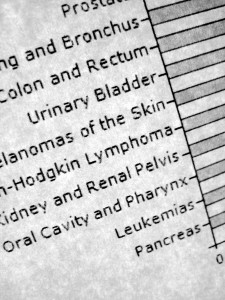False.
Valentine’s Day, another opportunity for me to forget a “special” occasion for my wife and be riddled with guilt. As if remembering to buy gifts on Christmas, birthdays, Easter, anniversaries, ground hog’s day, mother’s day, and of course helping my kids pull off an April Fools prank isn’t enough! Valentine’s Day, celebrated on February 14th, was established in AD 500 and has traditionally been a day for lovers to display affection for each other by offering gifts of cards, candy, and flowers. It is thought that the designation “Valentine’s Day” came from a Christian martyr or martyrs named Valentine. According to the website of the National Confectioners Association (NCA), one of those men, a priest named Valentine, was beheaded by order of the Roman emperor Claudius II on February 14th 270 AD because he was performing marriage ceremonies, something the emperor had outlawed. The website also says that more than 36 million boxes of heart shaped candy are sold for Valentine’s Day. Another tradition related to Valentine’s Day, in no way connected to lovers, is for children to exchange valentines at school. Our three children usually come home with dozens of valentines, and most of them have heart shaped candy, a sucker, or some form of cavity-causing delicacy attached to them. It’s really no surprise, then, that so many people think more candy is sold for Valentine’s Day than any other holiday. The truth is, however, that Valentine’s Day ranks fourth on the list of holidays for candy purchases. According to sales figures for 2007 compiled by the National Confectioners Association based upon data from Information Resources, Inc., and cited in an article published in Confectioner (2007), the top four selling holidays for candy were Valentine’s Day (1 billion), Christmas (1.4 billion), Easter (1.9 billion) and Halloween (2.1 billion). Trick or treat!
Reference:
Echeandia, J. Candy review: Holiday candy sales insights courtesy of Hershey Company; Seasonal candy sales for 2007 grew at Valentine and Easter in spite of short selling seasons. Confectioner (May 2007).

 ately refer to dogs as man’s best friend. I’ve grown up with dogs and have always had dogs in my life, so I would wholeheartedly agree with that statement. Dogs provide us with companionship, help seeing-impaired individuals safely navigate streets and sidewalks, and help farmers and ranchers herd sheep and cattle; dogs are also used to locate missing persons and detect things like drugs and bombs (a dog’s sense of smell is estimated to be 10,000 to 100,000 times more sensitive than a human’s). Recently, I had a chance to spend some time with a gentleman (Mike) from England at an outdoor archery range. Mike happened to have epilepsy and always traveled with his dog. I learned that day that Mike’s dog could warn Mike before he was going to have a seizure. Usually the warning (barking) came two to five hours before a seizure occurred, and Mike said his dog was right one hundred percent of the time. I was truly amazed! It now appears that dogs may also start being used to help detect cancer. A study by McCulloch and colleagues (2006) published in the journal Integrative Cancer Therapies examined whether dogs could be trained to detect cancer simply by sniffing someone’s breath. Due to increased oxidative stress, cancer cells emit slightly different waste products than normal cells. The results of the study suggest that dogs can be trained to smell cancer with high degrees of sensitivity and specificity. The authors concluded that “training was efficient and cancer identification was accurate; in a matter of weeks, ordinary household dogs with only basic behavioral ‘puppy training’ were trained to accurately distinguish breath samples of lung and breast cancer patients from those of controls.” The dogs used for the study were Portuguese water dogs and Labrador retrievers, but the ability to be trained to detect cancer is probably not breed specific.
ately refer to dogs as man’s best friend. I’ve grown up with dogs and have always had dogs in my life, so I would wholeheartedly agree with that statement. Dogs provide us with companionship, help seeing-impaired individuals safely navigate streets and sidewalks, and help farmers and ranchers herd sheep and cattle; dogs are also used to locate missing persons and detect things like drugs and bombs (a dog’s sense of smell is estimated to be 10,000 to 100,000 times more sensitive than a human’s). Recently, I had a chance to spend some time with a gentleman (Mike) from England at an outdoor archery range. Mike happened to have epilepsy and always traveled with his dog. I learned that day that Mike’s dog could warn Mike before he was going to have a seizure. Usually the warning (barking) came two to five hours before a seizure occurred, and Mike said his dog was right one hundred percent of the time. I was truly amazed! It now appears that dogs may also start being used to help detect cancer. A study by McCulloch and colleagues (2006) published in the journal Integrative Cancer Therapies examined whether dogs could be trained to detect cancer simply by sniffing someone’s breath. Due to increased oxidative stress, cancer cells emit slightly different waste products than normal cells. The results of the study suggest that dogs can be trained to smell cancer with high degrees of sensitivity and specificity. The authors concluded that “training was efficient and cancer identification was accurate; in a matter of weeks, ordinary household dogs with only basic behavioral ‘puppy training’ were trained to accurately distinguish breath samples of lung and breast cancer patients from those of controls.” The dogs used for the study were Portuguese water dogs and Labrador retrievers, but the ability to be trained to detect cancer is probably not breed specific.  If I were to base my response to this myth on what occurs in television shows and movies, the answer would be a resounding “yes!” TV shows and movies frequently have werewolves, zombies, and many other undesirables coming out during a full moon to engage in their sinister activities. These media outlets also exaggerate the amount of crime and abnormal human behavior that occurs during a full moon. This idea that the moon triggers a wide variety of deviant behavior in humans has been with us for many years. Consider that lunacy, which means insanity, is derived from the Latin word “luna” for moon. The full moon is frequently associated with or blamed for things like murder and other crimes, alcoholism, epilepsy, arson, natural disasters, suicide, and mental illness. It is also common for people to think that the moon influences things like the weather, fertility, and birthrates. We frequently read about police officers, paramedics, nurses, and physicians believing that crime rates increase and emergency room visits skyrocket during periods of a full moon. However, this belief is not supported by scientific studies. A few of the many studies that have been conducted on this topic have shown a relationship or association between the full moon and bad behavior, but the overwhelming evidence suggests there is no correlation between the two. Rotton and Kelly (1985) reviewed thirty-seven studies on this topic in an article published in the journal Psychological Bulletin and stated, “Although this meta-analysis uncovered a few statistically significant relations between phases of the moon and behavior, it cannot be concluded that people behave any more (or less) strangely during one phase of the moon than another.” Again, most of the studies conducted and published do not support the idea that the full moon influences human behavior in any way whatsoever.
If I were to base my response to this myth on what occurs in television shows and movies, the answer would be a resounding “yes!” TV shows and movies frequently have werewolves, zombies, and many other undesirables coming out during a full moon to engage in their sinister activities. These media outlets also exaggerate the amount of crime and abnormal human behavior that occurs during a full moon. This idea that the moon triggers a wide variety of deviant behavior in humans has been with us for many years. Consider that lunacy, which means insanity, is derived from the Latin word “luna” for moon. The full moon is frequently associated with or blamed for things like murder and other crimes, alcoholism, epilepsy, arson, natural disasters, suicide, and mental illness. It is also common for people to think that the moon influences things like the weather, fertility, and birthrates. We frequently read about police officers, paramedics, nurses, and physicians believing that crime rates increase and emergency room visits skyrocket during periods of a full moon. However, this belief is not supported by scientific studies. A few of the many studies that have been conducted on this topic have shown a relationship or association between the full moon and bad behavior, but the overwhelming evidence suggests there is no correlation between the two. Rotton and Kelly (1985) reviewed thirty-seven studies on this topic in an article published in the journal Psychological Bulletin and stated, “Although this meta-analysis uncovered a few statistically significant relations between phases of the moon and behavior, it cannot be concluded that people behave any more (or less) strangely during one phase of the moon than another.” Again, most of the studies conducted and published do not support the idea that the full moon influences human behavior in any way whatsoever.


 False.
False.

